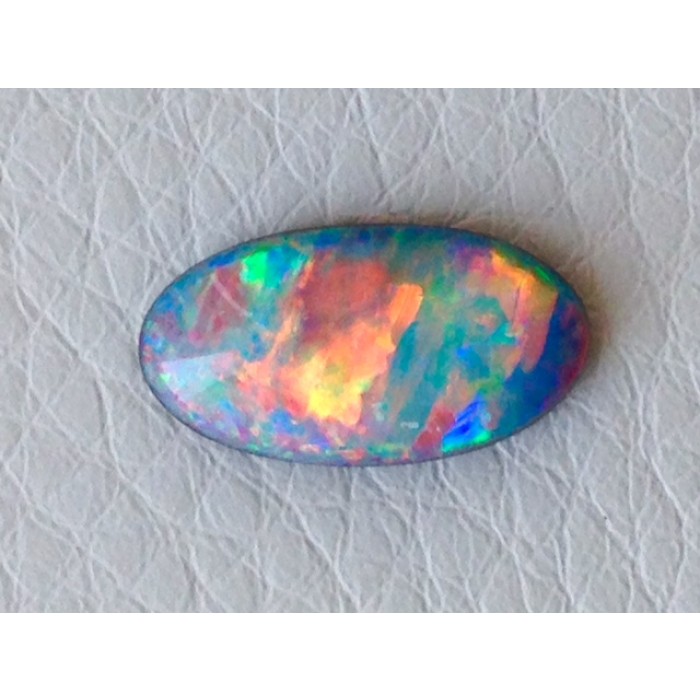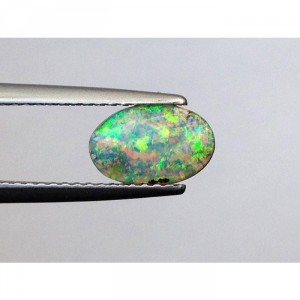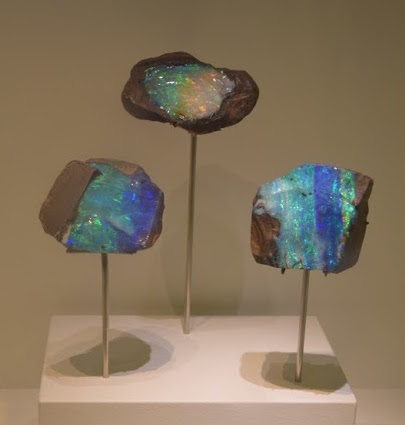We have all heard about the famous Opals from Australia, those that are mined as common boulders, which once broken, display a fantastic array of psychedelic colors. Opal that comes from the roman word “Opalus” which translates to “precious stone” was believed to bring death to the wearer when in contact with water. Today these very same Opals are making a comeback and this time, everyone wants one. Be it in a ring or as a pendant for a necklace there are no restrictions for this colorful gem as it wins hearts everywhere.

Have you ever wondered how this gemstone forms? At Jupiter Gem, we make it a point to understand all our products thoroughly so that we can offer you the best quality available. That being said, through this blog, we will cover how an Opal forms, the different types, the easiest way to identify a natural stone and how to care for your gem.
Comprised entirely of silica and about 20% water, Opals both Precious and Common have a very jelly like appearance. Both are made up of tiny microscopic silica spheres. In the Precious Opal, the spheres are arranged in an orderly manner diffracting the light entering the gem thus giving rise to the intergalactic appearance that we commonly call “Play of Color”. On the other hand, Common opals do not display the same flash or iridescent colors because the silica spheres are arranged in an irregular pattern.
A wide variety that occurs naturally and here are a few:
- Black Opal: receives a lot of attention because of the vibrant, neon play of color that is perfectly contrasted against the dark body color of the stone. These gems are usually translucent to opaque.

- White or Light Opal: Although these gems are translucent to semi-translucent, some spectacular pieces display the same vibrant rainbow colors against a white body color.
- Fire Opal: also known as Mexican opal has a yellow to red body color that can be Translucent to semi-translucent. When a fire opal displays its play of color, you will be left speechless.

- Boulder Opal: It is when bits of the host rock get encapsulated within the gem quality material of the Opal. These have a very earthy, natural feel.

Now that you know the different types on the market, here are the ways to identify them from their synthetic counterpart.
A good indicator is to check the pattern of the Play of Color when present within the stone or various other inclusions that will be visible under magnification. Some points are:
- Crazing: occurs when the water content is drawn out leaving the gem dry with cracks.

- Play of Color can occur in many different patterns from:
- Harlequin: when the strokes of color look like big paintbrush strokes, they also tend to be quite angular
- Pinfire: when the strokes of color are small and closely set
- Flame: when the gem only displays warm colors from reds to oranges
- Peacock: another term when the strokes of color are in cool blues and greens.
Opal is a relatively soft gem, which means it must always be in good caring hands. Lying at 5 to 6.5 on the Mohs scale of hardness it can be scratched by many other materials. When worn in a ring, the wearer must be aware of this and must refrain from doing intensive work as they could damage their stone. Continuous exposure to light and heat can also cause the gem to craze (develop cracks as a result of a loss of water), which should be another area of concern. On the other hand, it can be easily cleaned with warm soapy water in a bowl or a container.
If you’re looking for an Opal and don’t know where to find one, get in touch with us at Jupiter Gem. Our vast network of gemstone miners and traders across the globe will do all we can to help you find just the right gem to add to your collection.
Call Jupiter Gem on +1 323 844 3675 or email us at info@jupitergem.com.
References:
